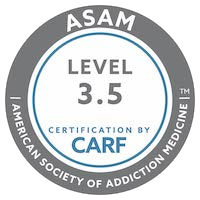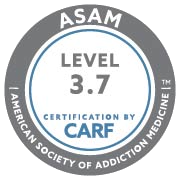Alcohol addiction is a chronic, relapsing disorder associated with compulsive drinking. It is the result of losing control over alcohol intake and developing a negative emotional condition when alcohol is not present.
Alcohol abuse disorder (AUD)- a condition that impairs one’s ability to control or stop alcohol use, despite adverse health, occupational, and social consequences. It can be mild, moderate, or severe. This disorder is also known as alcohol addiction, alcohol dependence, and alcoholism. The moderate-to-severe end of the AUD spectrum is alcohol addiction.
What causes addiction in the brain?
Like other drugs, alcohol has a strong effect on the brain. It produces pleasurable emotions and blunts negative feelings. These feelings can drive people to continue drinking alcohol despite the potential dangers to their health.
Research has shown that while drinking to manage stress can temporarily relieve emotional discomfort, it tends to increase negative emotions between alcohol intake. These changes can encourage further drinking and lead to an unhealthy cycle of alcohol abuse.
People who continue to drink alcohol may experience progressive brain changes. These changes can lead to brain dysfunction and a transition from occasional, controlled use to chronic misuse. This cannot be easy to manage. In addition, these changes can last long after an individual stops drinking alcohol and can lead to relapse.
The Addiction Cycle: Stages
Addiction can be described as a three-stage cycle. Each stage feeds off the other. These domains are executive function, incentive salience, and negative emotional states.
These domains are represented in three brain regions: the basal Ganglia, the extended Amygdala, and the prefrontal cortex. You can go through the three-stage cycle in weeks or months. Or, you may progress through it multiple times per day.
- Intoxication/Binge Stage: rewards, incentive salience, and pathological habits
- This stage is when a person feels the positive effects of alcohol, such as euphoria and anxiety reduction. It also allows for more social interaction.
- The reward system of the basal gland is activated repeatedly, which reinforces alcohol consumption and increases the chance of repeat consumption. The basal Ganglia is essential in motivating and forming routine behavior.
- The repeated activation of basal ganglia can also trigger changes in how a person reacts to stimuli related to alcohol consumption, such as people, places, or alcohol-associated cues like specific glassware, images, or descriptions of drinking. These stimuli can eventually trigger strong urges to drink alcohol.
- Consistent alcohol use can also lead to changes in the basal Ganglia, eventually leading to compulsive drinking.
2 Negative Affect/Withdrawal Stage – reward shortages and stress surfeit
- A person who has become addicted to alcohol will experience symptoms of alcohol withdrawal. These symptoms are symptoms that are not related to the benefits of alcohol. These symptoms may be physical (sleep disorders, pain, feeling sick) and emotional (dysphoria and irritability).
- Two sources are believed to be responsible for the negative emotions associated with alcohol withdrawal. First, a decrease in activation of the reward systems, or a reward deficit, of the basal Ganglia makes it more challenging to enjoy the joys and pleasures of daily living. Increased activation in the brain’s stress system–or a stress surplus–in the extended Amygdala can lead to anxiety, irritability, and unease.
- This stage is when the individual stops drinking alcohol for pleasure (“high”) and instead uses it to escape the “low” emotions to which chronic alcohol abuse has contributed.
3 Preoccupation/Anticipation Stage: craving, impulsivity, and executive function
- This is when an individual begins to drink again after abstinence. This stage is when a person is obsessed with alcohol and the ways to get more. They look forward to the next time they will drink it.
- Alcohol addiction can lead to a reduction in the prefrontal cortex, which is an area of the brain that controls executive function. This includes planning thoughts and activities, prioritizing tasks, and managing time. This is why this brain area plays a crucial role in this stage.
Hyperkatifeia
Hyperkatifeia can be described as the negative emotional state associated with drug withdrawal. It is believed that this overactive, negative emotional state can lead to the use of alcohol to get relief. This may be due to profound brain reward and stress system changes.
What Should We Do About Alcohol Addiction and AUD?
Alcohol intake is associated with many social and health consequences. These include interference with personal relationships and heart and liver diseases, cancers and motor vehicle collisions and other accidents, alcohol overdoses, violence, homicide, and suicide. Therefore, a person with AUD is more likely to drink alcohol regularly, especially with alcohol addiction.
Young people are particularly at risk of AUD. For example, adolescents who drink alcohol from preteens through their twenties may hurt brain development. This can increase the likelihood of developing AUD later in their lives.
However, most people with AUD can benefit from treatment regardless of age or severity. This includes behavioral health therapies, medication, or both.
A joyful life without alcohol and drugs is possible, and we are here for you, helping with every step along your comfortable recovery process. Hathaway Recovery’s mission is to inspire individuals to be their best and most happy selves. With our sincere intentions, healing, and healthy ideas, lives are transformed.






